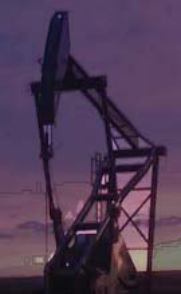Site Navigation
Oilfield expertise at your desktop
Basic Well Planning checklist
Successful well planning needs proper collaboration between geoscientist and engineers.Basic consideration to keep in sight before starting to a well planning:-
- Target(s) to be evaluated.
- Drilling method to reach the target(s).
- Process of evaluation of the target zone(s).
Given below are few of the points to consider when planning a well:-
- Lease status of area like ownership,limitation like oil rights down to certain depth/formation, gas rights below to certain level,nearby acreage availability ,well permit ,survey lines,ground elevation,legal well location etc.
2.Geological and Economical Justification like anticipated pay zone(s),hydrocarbon phase and expected net to gross .
3.Detailed description for Each formation like name, age, depth, thickness, structure , lithology, secondary and exotic minerals if present, porosity and permeability.
- Environmental and local cultural factors like weather, topography, need of Environmental Impact Statement (EIS), cultural hazards, accessibility and safety hazards.
5.Drilling program and plan for drilling straight or slanted or an horizontal well,anticipated total depth (TD) and true vertical depth (TVD),presence of H2S and other gasses,presence of over-pressured zone,casing point,drilling problems like (a) sloughing shales,(b) swelling shales (c) salt beds, (d) faults, (e) high angle beds, (f) lost circulation zones like fractures, excessive mud weight etc.
- Communication channel with operators and partners.
- Data Collection to be done and crew size needed for that like Mud logging and services to be provided with mud logging acquisition, number of sets of each type of sample (wet, dry, geochemical, palaeontological), pressurized unit,bit dulling plot, overpressure plot, rate of penetration (ROP), weight on bit (WOB), pump pressure (PP), revolutions per minute (RPM) and bit data, mud data, pit volume monitors, special analysis like ion tracing, radioactive monitoring, shale densities , hydrogen sulphide (H2S) detectors, ‘Measurement While Logging’, fluid samples, repeat formation test (RFT) and drill stem test (DST), coring of different types.
- Other data to be recorded and person responsible for interpreting it like drilling records, mudlogs and mudlog records, electric logs, core and/or cuttings (wet and/or dry), fluid samples ,Pressure charts, laboratory analyses of cuttings and cores, biostratigraphic and geochemical data, fluid properties etc.
- For planning a well main source of data comes from nearby offset wells.Offset well data to be checked are wireline logs, mudlogs, drilling reports, velocity surveys, bit records, palaeontology and geochemistry reports, production data.
